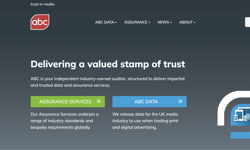
If there has been a silver lining to this strangest of years, it has been the boost the pandemic has given to subscriptions. Many publishers have seen record numbers of new subscribers as consumers have sought out reliable sources of information, content to fill increased leisure time and distraction from all the dire news out there, and, in the case of print, a delivery method which meant they didn’t need to step out of the house.
However, for many publishers, increasing the subs element of their circulation was a strategic aim long before lockdown due to its oft-cited benefits: recurring revenues, more predictable cash flows, and the increased insight which a subscription relationship brings, allowing you to forge long-term, more profitable relationships with your readers.
Also, predating Covid, was the growing realisation that advertising revenues from the open web would never be enough to sustain quality journalism, and a major publishing trend of the last few years has been to increase reader revenues in general, not just via subscriptions.
Yet, when all this is said and done, subscriptions isn’t yet the priority for every publisher.
In time, that might change. But one of the first principles of subs marketing – the importance of knowing who you’re marketing to – is catching on widely, even for publishers who are not yet ready to start charging for their content.
To that end, more and more publishers are experimenting with a soft registration wall. By asking for the teeny-weeniest bit of information (an email address and permission to market) in exchange for access to their content, publishers are transforming the relationship they have with visitors.
Moving web traffic from ‘unknown’ to ‘known’ opens up a world of possibilities:
- it can turbo-charge your marketing: all of a sudden you can tailor your messaging and ditch the one-size-fits-all blunderbuss approach of old.
- it brings a steady flow of new names for your newsletter lists.
- it enables you to personalise your offering, tailoring, for instance, your home page to what you know about the visitor.
- the intel that logged-in behaviour delivers can be transformative across your business, not just within your marketing team. Your editorial team will receive what can be eye-opening insight into how their output is being consumed and by whom and this knowledge can drive significant and beneficial change to the business as a whole.
- it facilitates the onward move to subs, if that is where you end up deciding you want to be.
Through skilful marketing and with the right tech infrastructure in place, that initial email address will soon be supplemented with additional information (name, location etc) and usage data and purchase history as you start to build increasingly detailed profiles of your readers.
Without being too big-brother-ish, such information is business gold dust – it can mean the difference between success and failure for your publishing brand. You don’t have to be a rocket scientist to see why. You’re suddenly working with the lights on.
All of a sudden you can tailor your messaging and ditch the one-size-fits-all blunderbuss approach of old.
This article was first published in InPublishing magazine. If you would like to be added to the free mailing list, please register here.












